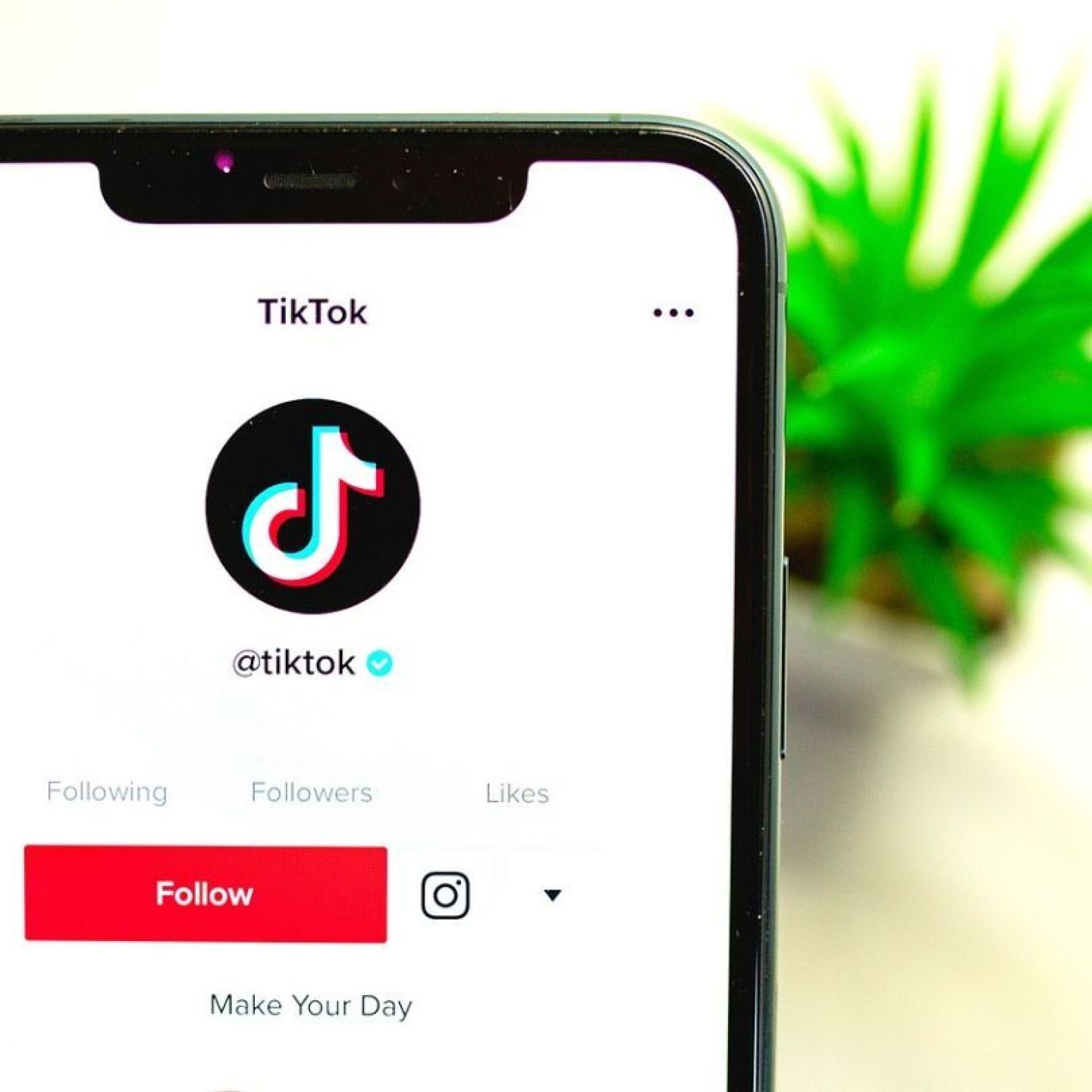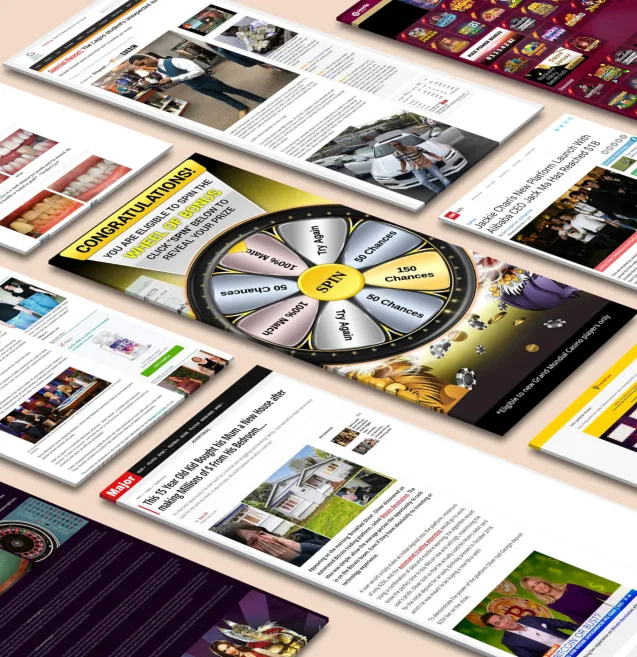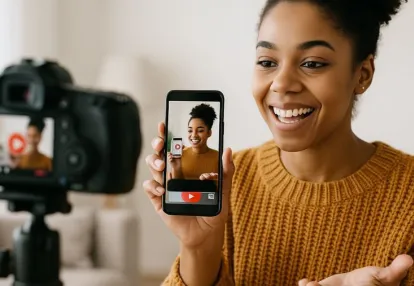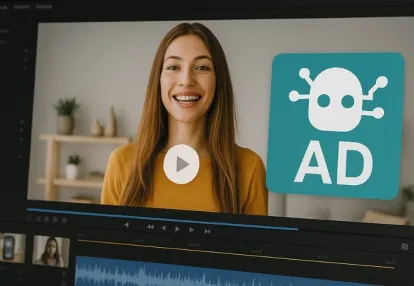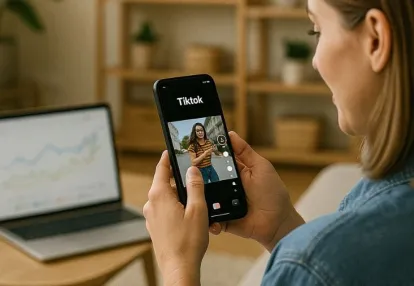
Our spy tools monitor millions of TikTok ads from over 55+ countries. Biggest TikTok Ad Library in E-commerce and Mobile Apps!
Try It FREETikTok has changed the social media game, grabbing the attention of millions of college students around the globe. With its quick-fire content delivery and personalized "For You" feed, this platform has evolved from a basic video-sharing app into a cultural phenomenon that sets trends, influences behavior, and commands unprecedented screen time.
The burning question on everyone's mind: Is TikTok truly more addictive than other social media platforms? While many users report spending hours scrolling through endless streams of short-form videos, the reality might be more nuanced than popular perception suggests.
This article delves into:
You'll discover why TikTok's unique algorithm creates such a powerful hold on its users, and how this compares to platforms like Instagram and Snapchat. Through research-backed insights and expert analysis, we'll unpack the complex relationship between perception and reality in social media addiction.
Ready to understand the true nature of TikTok's addictiveness? Let's explore the fascinating psychology behind your favorite social media platforms and learn how to take control of your digital wellbeing.
Recent data paints a compelling picture of TikTok's dominance in college campuses. A staggering 75% of college students now use TikTok daily, with an average engagement time of 95 minutes per day - surpassing both Instagram (51 minutes) and Snapchat (49 minutes).
The platform's magnetic pull becomes evident through these usage patterns:
TikTok's unique appeal stems from its sophisticated content delivery system. The platform's algorithm learns user preferences through:
This personalized approach creates a "digital fingerprint" for each user, delivering content that resonates with their specific interests. A study by Stanford University revealed that 89% of college students find TikTok's content recommendations "highly accurate" to their preferences.
The short-form video format hits a sweet spot in content consumption. These 15-60 second clips provide:
TikTok's creative tools democratize content creation, allowing students to:
The platform's "For You Page" serves as a personalized entertainment channel, making it increasingly difficult for college students to disconnect. This algorithmic precision, combined with bite-sized content delivery, creates a powerful engagement loop that keeps users coming back for more.
Social media addiction is a behavioral dependency where individuals feel an uncontrollable urge to engage with digital platforms. This psychological condition is similar to substance-related disorders, as it activates the same reward pathways in the brain.
Recent studies reveal concerning statistics about social media addiction among college students. Research from the International Journal of Environmental Research and Public Health indicates that 47% of college students exhibit symptoms of social media addiction, with TikTok users showing particularly high rates at 67%.
The platform's unique features contribute to addictive behavior. Users have reported experiencing withdrawal symptoms when they are unable to access TikTok:
"I feel anxious and disconnected when I can't check my For You page. It's like missing out on a conversation with friends" - Sarah, 19, College Sophomore
Global Statistics Paint a Concerning Picture:
The psychological impact goes beyond just usage numbers. Brain scanning studies show increased activity in the nucleus accumbens—the pleasure center of the brain—when using TikTok, similar to what is seen in other behavioral addictions.
College students are particularly vulnerable to these addictive patterns. The combination of academic stress, social pressure, and the need for quick entertainment creates an environment conducive to dependency. Data reveals that 82% of students check their TikTok accounts during lectures, with 64% reporting difficulty concentrating on coursework due to the desire to check their feeds.
The endless scroll feature on TikTok creates a powerful dopamine loop that can lead to significant mental health challenges. Recent studies reveal a direct correlation between excessive TikTok usage and increased rates of:
The platform's rapid-fire content delivery system triggers a constant state of psychological arousal, making it increasingly difficult for users to find satisfaction in slower-paced, real-world activities. This phenomenon, known as "digital overstimulation," creates a cycle of:
"The more time spent on TikTok, the less rewarding normal activities become, pushing users back to the platform for another hit of dopamine" - Dr. Sarah Chen, Digital Psychology Institute
Research conducted across 15 universities reveals concerning patterns in student performance:
The platform's short-form content structure particularly affects learning capabilities. Students exposed to consistent TikTok usage show reduced ability to engage with longer-form educational content, creating a "microwave mentality" toward learning - expecting instant gratification and struggling with delayed rewards.
A notable psychological impact emerges in the form of "phantom scrolling" - where users unconsciously mimic the scrolling motion even when not holding their phones. This behavior indicates deep-rooted neural pathway changes, similar to those observed in other behavioral addictions.
The isolation paradox presents another concerning trend: while TikTok creates an illusion of social connection through shared content and interactions, users report feeling increasingly disconnected from real-world relationships. This digital-social substitution often masks underlying loneliness while simultaneously deepening it.
Recent studies reveal a fascinating disconnect between perceived and actual social media addiction patterns among college students. While 78% of surveyed students believe TikTok is "highly addictive" compared to other platforms, usage data tells a different story.
Average Daily Usage Time:
This perception-reality gap stems from several cognitive biases affecting how students evaluate their social media use:
A 2023 study by the Digital Wellness Institute tracked 5,000 college students' actual platform usage versus their perceived addiction levels. The results showed that while TikTok led in average daily usage, Instagram users reported higher difficulty disconnecting from the platform.
Key Findings:
These findings suggest that addictiveness isn't solely determined by time spent but by the psychological grip platforms hold on users. The rapid-fire content delivery system of TikTok creates a distinct user experience that might feel more consuming, yet doesn't necessarily translate to stronger addictive patterns than its social media counterparts.
TikTok's algorithm is a brilliant piece of artificial intelligence designed to create a highly personalized experience that keeps users hooked. This complex system looks at every single action you take within the app:
The algorithm analyzes this information instantly, constantly improving its understanding of what you like. Unlike older social media platforms that focus mainly on your connections with others, TikTok's algorithm prioritizes the relevance of the content over social relationships.
The short videos on TikTok are a big reason why they are so addictive:
The AI behind TikTok takes advantage of these video features by figuring out what specific things in the videos grab your attention. For example, if you finish watching a cooking video, the algorithm doesn't just see that you're interested in cooking - it also looks at things like:
This detailed analysis helps TikTok show you even better content that matches what you subconsciously prefer. The "For You" page on the app becomes your own personal entertainment channel, perfectly tailored to your tastes. Learn more about TikTok's algorithm and viral success.
Every time you interact with something on TikTok, it strengthens the algorithm's understanding of what you like. This advanced system can predict with impressive accuracy which videos will keep you interested, creating a powerful cycle:
This ongoing process makes TikTok's system for delivering content exceptionally effective at keeping users engaged, even more so than traditional social media platforms when it comes to consistently showing relevant content.
Recent studies reveal distinct gender patterns in social media usage and addiction susceptibility. Female users spend approximately 30% more time on TikTok compared to male users, with an average daily usage of 110 minutes versus 85 minutes for males.
The sociopsychological factors behind these gender differences paint an intriguing picture. Women's heightened engagement often stems from:
"Social validation and connection-seeking behaviors are more prevalent among female users, leading to increased platform dependency" - Social Media Psychology Quarterly, 2023
Male users exhibit different addiction patterns, focusing on:
Platform-specific data shows varying gender gaps:
These differences extend to addiction risk factors. Female users report higher levels of FOMO (Fear of Missing Out) and social anxiety related to platform use. Male users show increased susceptibility to gaming-related content and competitive features.
Research indicates that content algorithms adapt differently based on gender interaction patterns. TikTok's algorithm particularly excels at identifying and serving gender-specific content, potentially amplifying these usage disparities and addiction risks.
Social media's impact on academic performance has become a critical concern, with TikTok emerging as a unique challenger to student productivity. Recent studies reveal that students who actively use TikTok during study sessions experience a 20% decrease in information retention compared to those who maintain focused study periods.
The platform's rapid-fire content delivery system creates distinct challenges:
Research comparing different platforms shows TikTok's unique impact on study habits:
Platform Average Study Interruptions/Hour Focus Recovery Time TikTok | 12 times | 4-6 minutes |
8 times | 2-3 minutes | |
YouTube | 5 times | 1-2 minutes |
The myth of effective multitasking has been particularly damaging in the context of TikTok use. Students who believe they can successfully study while watching TikTok videos typically score 15-25% lower on assessments than their peers who study without social media distractions.
A concerning trend shows students using TikTok as "background noise" during study sessions. This practice:
The platform's algorithm compounds these issues by serving increasingly engaging content, making it harder for students to maintain academic focus. Unlike traditional study breaks with Instagram or YouTube, TikTok's continuous stream of short videos creates a more challenging environment for returning to academic tasks.
Data from university learning centers indicates that students who implement strict social media boundaries during study sessions demonstrate improved academic outcomes, with grade point averages typically 0.5-0.8 points higher than those who regularly engage with TikTok while studying.
Self-regulation is a critical skill for students dealing with the addictive nature of social media platforms. Here's a comprehensive set of actionable strategies to maintain a healthy balance:
These strategies help students maintain academic focus while still enjoying social media platforms. The key lies in conscious consumption rather than complete abstinence. Regular assessment of your social media habits enables adjustments to your self-regulation approach as needed.
Remember: Small, consistent changes in digital habits create significant improvements in academic performance and mental well-being.
Current research on social media addiction presents significant gaps that demand attention from the academic community. The existing studies predominantly focus on Western populations, creating a notable blind spot in understanding how cultural factors influence addiction patterns across different ethnic groups.
Key Research Limitations:
The research landscape needs expansion into unexplored territories. Studies examining the intersection of cultural values, social norms, and TikTok addiction could reveal valuable insights for developing culturally sensitive intervention strategies.
Promising Research Directions:
A particularly intriguing avenue for future research lies in examining the potential benefits of strategic social media use. While current studies primarily highlight negative impacts, understanding how educational content consumption on TikTok affects academic performance could reshape our perspective on platform utility.
Proposed Research Areas:
The development of a comprehensive social media addiction scale that accounts for platform-specific features would enhance our understanding of TikTok's unique addictive properties. This tool could help distinguish between healthy engagement and problematic usage patterns across different cultural contexts.
The data reveals a complex reality about TikTok's addictive nature compared to other social media platforms. While perception often paints TikTok as the most addictive platform, research suggests the truth lies in individual usage patterns and personal susceptibility to digital engagement.
Key Insights for Students:
For marketers and businesses looking to understand TikTok’s engagement patterns, tools like Anstrex InStream offer insights into TikTok's ad performance, helping you navigate the platform's addictive nature while maximizing your strategic approach.
The path forward isn't about completely avoiding TikTok or other social media platforms—it's about developing a conscious relationship with these tools. Your success depends on implementing strategic limits while still enjoying the benefits these platforms offer.
Remember: Social media platforms are designed to capture attention, but you hold the power to decide how much you give them. By staying aware of your digital habits and making intentional choices about your online time, you can maintain a healthy balance between entertainment and productivity in your academic journey.
Receive top converting landing pages in your inbox every week from us.
Most Read
User-generated content (UGC) refers to any content—videos, images, reviews, or testimonials—created by everyday consumers rather than brands themselves. InStream ads are video advertisements that play before, during, or after streaming content on platforms like YouTube, TikTok, and Facebook.
Elena Morales
7 minOct 30, 2025
Quick Read
AI is reshaping this landscape at an unprecedented pace. AI-generated video scripts and AI video marketing tools are no longer futuristic concepts—they're here, and they're changing how brands create content. Traditional video production required teams of writers, videographers, editors, and weeks of production time. AI has compressed this timeline dramatically.
Rachel Thompson
7 minOct 24, 2025
Tips & Tricks
TikTok InStream Ads have become one of the most effective advertising formats in digital marketing in 2025. These immersive video ads seamlessly blend into users' feeds, grabbing attention while preserving the platform's genuine, entertainment-focused experience. As brands vie for visibility among Gen Z and young millennials, the importance of TikTok's advertising ecosystem continues to grow rapidly.
Liam O’Connor
7 minOct 10, 2025
